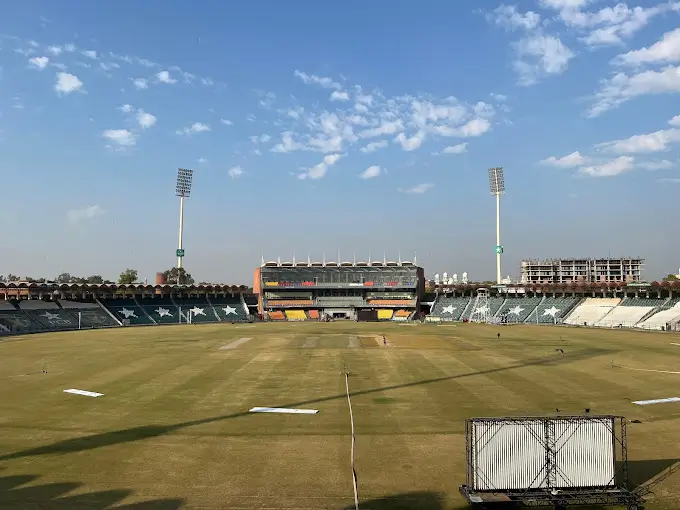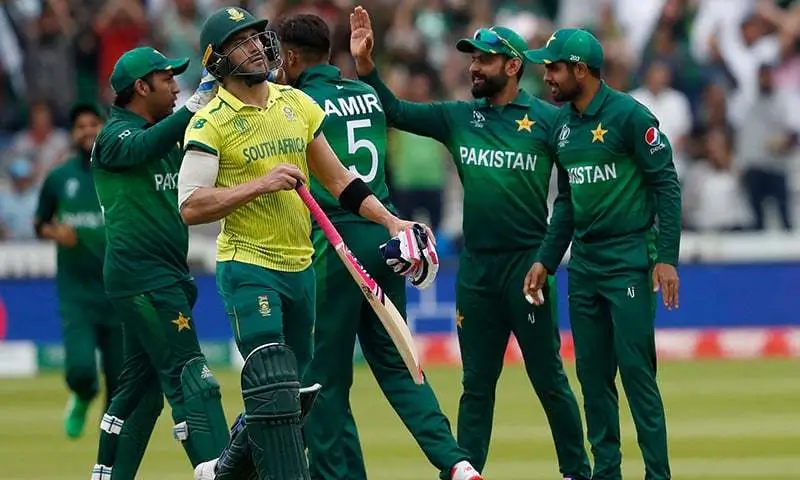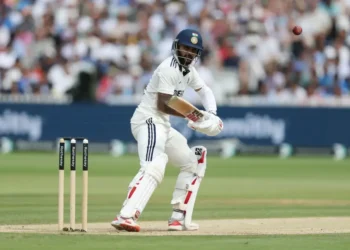Test cricket returns to Gaddafi Stadium as Pakistan face defending champions South Africa. The two teams enter the series with very different stories. South Africa comes as WTC winners, carrying an 11-match winning streak. Pakistan, meanwhile, are searching for consistency and redemption after finishing last in the previous cycle.
This contest represents more than just a bilateral series. It’s a meeting of contrasting approaches — Pakistan’s spin-heavy setup versus South Africa’s adaptive mindset. Without Temba Bavuma and Keshav Maharaj, the visitors rely on a less-experienced spin trio to deliver in unfamiliar conditions. For Pakistan, captain Shan Masood hopes his team’s new approach to pitch preparation pays off.
The Gaddafi Stadium adds historical charm to the occasion. Hosting only its second Test since 2009, the venue promises heat, turn, and plenty of noise. Both sides know the toss could be crucial, as recent matches here favoured the team batting first. With Babar Azam and Mohammad Rizwan returning, Pakistan aim for a fresh start, while Aiden Markram seeks to lead a composed title defence on Asian soil, like Bangladesh.
South Africa begins WTC defence in Pakistan’s testing spin conditions
The Proteas arrive in Lahore carrying the confidence of champions but also facing new challenges. Their ten-match winning streak speaks volumes about their quality, yet this series marks unfamiliar territory. They begin a WTC title defence without their regular captain, Temba Bavuma, forcing Aiden Markram into a leadership role that demands tactical flexibility.
Spin is expected to dominate this contest, with the Gaddafi surface built for turn and variation. Without Keshav Maharaj, South Africa will depend on Simon Harmer, Prenelan Subrayen, and Senuran Muthusamy. These bowlers must adapt quickly to subcontinental rhythms where patience, not pace, wins matches. Kagiso Rabada remains the spearhead, but his impact will hinge on reverse swing late in innings.
For South Africa, the key is handling spin with composure. Ryan Rickelton returns to a venue where his previous double century against Pakistan still echoes. Yet, this time the challenge is different — spin from both ends, lower bounce, and heavy foot traffic on the surface. Their preparation camp back home focused entirely on replicating these conditions, showing clear intent to avoid early shocks.
Pakistan’s spinners ready to test South African technique
Pakistan’s plan for this series is transparent — spin from both ends. With Noman Ali and possibly Abrar Ahmed or Sajid Khan, they have created an attack designed to exploit Lahore’s rough patches. Noman’s recent numbers — 36 wickets in his last four Tests — highlight how effective he’s been on turning tracks.
His accuracy and flight make him ideal for these surfaces, especially against foreign batters unused to such turn. Pakistan’s strategy revolves around building pressure and letting spinners dictate tempo. If Sajid misses out, Asif Afridi could step in to balance the lineup.
Shan Masood knows early breakthroughs matter. By attacking with spinners in the first session, Pakistan hope to push South Africa into survival mode.
How is Test Cricket helping Pakistan regroup and rebuild unity?
For Pakistan, Test cricket remains the purest space for rebuilding identity. The format offers time, reflection, and patience — three things modern Pakistan cricket often lacks. After a disappointing WTC run, this home series allows players to reconnect with the process rather than the pressure.
Skipper Shan Masood has stressed discipline and consistency over flair. Babar Azam and Mohammad Rizwan bring calmness back to the dressing room. Their experience in handling long innings is vital for setting benchmarks for young players. These matches are a chance to rebuild trust between batters and bowlers — something Pakistan desperately needs.
In an era where T20s dominate, Test cricket allows Pakistan to reset culture and confidence. Winning sessions, not overs, will define their success. The slower tempo forces responsibility and shared focus — the perfect antidote to Pakistan’s recent inconsistency.
A series win here can create the foundation for qualification in the next WTC cycle. With balanced selection and smart tactics, this could mark Pakistan’s new beginning.
Why Gaddafi Stadium is the perfect venue for Pakistan’s WTC revival?
The Gaddafi Stadium isn’t just another ground; it’s an emotional symbol. Once silenced by years of absence, it now stands tall as the heartbeat of Pakistan cricket. Its return as a regular Test venue signals continuity, stability, and passion.
Built anew before the Champions Trophy 2025, the stadium now combines history with modern facilities. The atmosphere here is intimate yet electrifying. The crowd sits close, and every cheer echoes across Lahore. The dry October conditions are ideal for turning pitches, and the ground’s surface naturally breaks down after two days, inviting spin battles.
For players, performing here means legacy. Fans fill stands not only for entertainment but national pride. Youngsters like Saud Shakeel and Kamran Ghulam get to experience that energy firsthand. For the Pakistan Cricket Board, this venue reinforces the message that home Tests belong here.
The balance of tradition and energy makes Lahore a perfect stage for WTC redemption.
Gaddafi Stadium: A venue that amplifies Test match drama
Gaddafi’s architecture and sound amplify every moment. As the ball spins and batters defend, the crowd hums with tension. Unlike neutral venues of the past decade, Lahore adds character and unpredictability. It’s afternoon heat cracks pitches faster, rewarding discipline and grind.
It’s where Pakistan’s cricket heart beats loudest — and for South Africa, this will be the toughest initiation in their title defence.
Why South Africa must make a strong statement in Lahore?
For Aiden Markram’s side, this series is more than just a WTC checkpoint. It’s about proving adaptability beyond home comfort. Historically, South Africa’s pace bowlers have thrived on fast tracks, but Lahore demands reinvention. To continue their winning streak, they must win through spin, patience, and tactical intelligence.
The absence of Bavuma leaves a void, but it also opens opportunities. Players like Wiaan Mulder and Dewald Brevis can redefine roles, while the experienced Rabada anchors leadership through example. South Africa’s key is starting well, particularly in the first two sessions. Batting first could be decisive given the expected deterioration.
Winning here would send a message — that the champions can win anywhere, under any condition. For Markram, it’s a chance to prove South Africa’s transformation is sustainable, not situational. The Gaddafi pitch, dry and tricky, will test their evolution better than any headline could.
Conclusion
The Lahore Test represents a story of contrasts — one team defending pride, another defending a crown. Pakistan seek revival and rhythm; South Africa chase continuity and control. Both will battle under fierce heat, loud fans, and unpredictable turn.
For Pakistan, it’s about regaining self-belief through the long format. For South Africa, it’s the start of a historic title defence. Noman Ali’s spin against Rabada’s aggression defines the duel of styles. Babar Azam’s calm against Markram’s intensity adds narrative weight.
Test cricket at the Gaddafi Stadium feels more symbolic than ever. It’s not just about points or trophies but the rebirth of passion in both teams. Whoever wins here sets the tone for the entire WTC cycle ahead.















